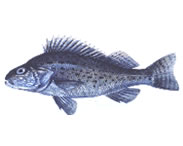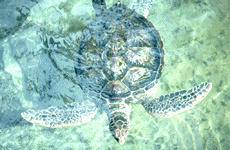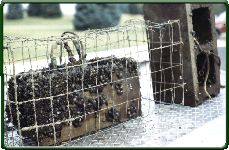- Home
- About S&T
- Taxa/Organisms
- Ecosystems
- Issues
- Methods & Tools
- Reports & Publications
- Location
- Search
July 31 2007 | Publisher: Other Federal Agency (Center for Coastal Monitoring and Assessment (CCMA)) | Format: URL
ccma.nos.noaa.gov — This website is the entry point to data for the Mussel Watch, Bioeffects, and Benthic Surveillance programs. This resource links to the National Status & Trends Program fact sheet (pdf), and several projects including Mussel Watch, Benthic Surveillance, and Bioeffects Assessment. Users can also get general information about the Center for More...

Publisher: Other (National Invasive Species Information Center) | Format: URL
www.invasivespeciesinfo.gov — From the About NISIC. "The National Invasive Species Information Center (NISIC) was established in 2005 at the National Agricultural Library to meet the information needs of users including the National Invasive Species Council. ... NISIC creates and manages the www.invasivespeciesinfo.gov Web site. The Web site serves as a reference gateway to More...

Publisher: USGS | Science Center: Upper Midwest Environmental Sciences Center (UMESC, LaCrosse) | Format: URL
www.umesc.usgs.gov — Eurasian Ruffe pose a threat to native fish because they(1) mature quickly, (2) have a high reproductive capacity, and (3) easily adapt to new environments. Ruffe were first detected in western Lake Superior in 1986. UMESC scientists are conducting research on various types of piscicides (chemicals that kill fish). They are attempting to develop More...

Publisher: USGS | Science Center: Western Fisheries Research Center (WFRC, Seattle) | Format: URL
wfrc.usgs.gov — Ballast water discharges are the most significant cause of aquatic biological invasions in coastal waters, including the Great Lakes. Currently, treatment of ballast water prior to discharge at the receiving port offers significant promise to help control this problem. However, development of treatment technologies is limited by lack of objective More...

Publisher: USGS | Science Center: Upper Midwest Environmental Sciences Center (UMESC, LaCrosse) | Format: URL
www.umesc.usgs.gov — Zebra mussels have caused drastic declines in native clam and mussel populations in some locations. Zebra mussels compete with other invertebrates and young fish for plankton, the primary food source for these groups. UMESC scientists are investigating the effects zebra mussels are having on the riverine ecosystem. This study examines the effects More...

Publisher: USGS | Science Center: Western Ecological Research Center (WERC, Sacramento) | Format: URL
www.werc.usgs.gov — Riparian vegetation is intimately linked to the stream and river channels along which it grows. This project addresses the status of the riparian zone along Redwood Creek north coastal California, and answers three questions: 1) How have the overstory riparian conditions changed in Redwood Creek and major tributaries since the advent of timber More...

Publisher: USGS | Science Center: Forest and Rangeland Ecosystem Science Center (FRESC, Corvallis) | Format: URL
fresc.usgs.gov — The National Park Service has stated that declining amphibian populations are the top priority for research in the National Park System. Salamanders are a native vertebrate predator in high-mountain lakes throughout the western US, especially in many small lakes naturally barren of fish. This issue overview demonstrates the potential for using More...

Publisher: USGS | Science Center: Forest and Rangeland Ecosystem Science Center (FRESC, Corvallis) | Format: URL
fresc.usgs.gov — Little is known about the amphibian taxa associated with streams, lakes, ponds, and wetlands in Mount Rainier National Park (MORA). This issue overview addresses the concerns about the possible impacts of introduced trout on amphibian taxa, and park management's interest in documenting current distribution and abundance of amphibian taxa in the More...

Publisher: USGS | Science Center: Forest and Rangeland Ecosystem Science Center (FRESC, Corvallis) | Format: URL
fresc.usgs.gov — Fish introductions have been implicated in the disappearance of amphibian communities and in the alteration of zooplankton communities. Furthermore, the presence and abundance of amphibian larvae and zooplankton in mountain lakes are directly related to nutrient concentrations in the aquatic environment, as well as enhancement to recreational More...

Publisher: USGS | Science Center: Western Ecological Research Center (WERC, Sacramento) | Format: URL
www.werc.usgs.gov — Native amphibian and reptile populations worldwide are under threat from exotic invasive species of plants and animals, including other reptiles and amphibians. As habitats are changed and plant community organization is modified by exotic species, delicate relationships between plants and animals are altered or eliminated, creating a negative More...

Publisher: USGS | Science Center: Upper Midwest Environmental Sciences Center (UMESC, LaCrosse) | Format: URL
www.umesc.usgs.gov — The invasion of the exotic zebra mussel (Dreissena polymorpha) into the Upper Mississippi River (UMR) was documented in 1991 with the discovery of a zebra mussel in Pool 8 near La Crosse, Wisconsin. Zebra mussels have expanded their range throughout the UMR because of their high reproductive rate, the free-swimming veliger stage, and ease of More...

Publisher: USGS | Science Center: Western Fisheries Research Center (WFRC, Seattle) | Format: URL
www.werc.usgs.gov — Parasites can play a positive role in ecosystems. The USGS Western Ecological Research Center is working with the Channel Islands National Park in California to better understand how bacterial epidemics can protect kelp forests from overgrazing by sea urchins and how parasitic castrators might be used against invasive crabs. Researchers will More...
